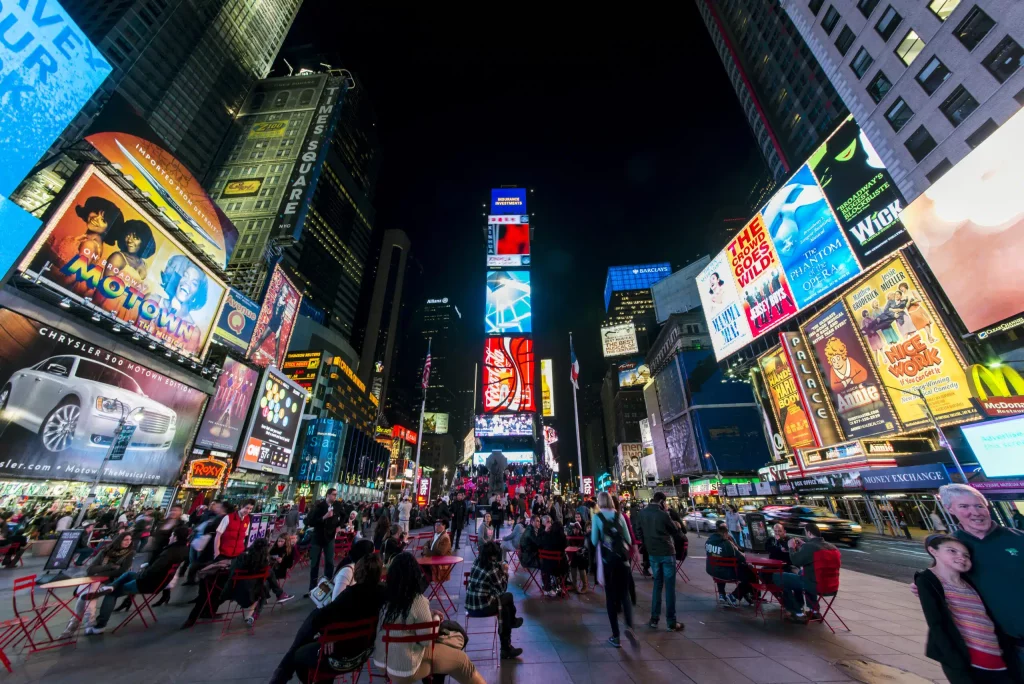Studying at University of Westminster, I have learnt how to create, promote, and sell the product. I have learnt how to impact customer’s buying decision and how to make people chose your brand and your service/product over someone’s else. Moreover, I have met a lot of amazing people like marketing professionals, students, and just people who are truly passionate about this industry. But as a marketing student and future marketer, I have never thought about the negative impact marketing can make on the world around me.
Have you? Have you ever thought how promotions, discounts, and sales can harm the world we live in? Well, now I have. And before I have done any of the research, I did not realise how huge the impact of our actions can be. And it is only our choice to make it either positive impact, or negative.

Bitter truth or sweet lies: how advertising influence human consciousness
The majority of people are sceptical about advertising. Even though they make an effort to thumb through the newspapers and magazines, avoid reading advertisements while out, and lower the TV volume, advertising still has a significant impact on people’s consciousness. In our studies, we as a marketers employ strategies that compel consumers to pay attention to information, providing promotions, tastings, discounts, money return guarantees, “two for the price of one” purchases. In fact, his is only part of the techniques designed to influence human consciousness.
As professor from the University of Sunderland in the UK observed that a “consumer society could just as easily be called an advertising society.” (Walker S., 2023).
Beyond the hype: The dark side of marketing
My university experience was always about fun and creativity. Doing my assessments, I was concentrating on how to promote the product or service in the best way and according to a brand’s perspective. However, the dark side of the campaigns that I created was hidden in the shadow. As stated in the book “Sustainable Marketing: The industry’s role in a sustainable future” by Paul Randle and Alexis Eyre there are a numerous factors where marketing may affect environment in a negative way. So, let’s dive in into some of them.
To be honest, I love shopping. Even though my purchases became more thoughtful after I started my studies at University of Westminster, I still have the habit of impulse buying and I am still influenced by most of the trends. And can you believe? The main damage is caused by the overconsumption. Where overconsumption leads to several factors. As an example, I am going to use Fast-Fashion.
Clothing brands determined that by increasing the quantity of clothing sold, they could reduce production costs and consequently increase their revenue. By convincing consumers that they had to follow the newest trends, marketers were able to establish a desire in their minds (Randle P., Eyre A., 2023).
Pollution
The manufacturing of merchandise, accessories, and shoes has a harmful effect on the environment. These include chemicals and pesticides that end up in the water when cotton is grown and then dyed, as well as the toxic gasses released during the manufacture of synthetic materials and the shipping of completed goods. Consequently, more greenhouse gases were released into the environment by this industrial sector in 2015 than by all the ships and airplanes built worldwide in the same period.
Finally, let’s talk about Big Sales Days like Black Friday. This is such a resent example, as during this year’s Black Friday I have purchased at least two pieces of clothes that I already dislike. Moreover, I made more than three online orders. Overconsumption during sales events has become a chaotic phenomenon, originating with modest discounts aimed at clearing excess inventory. Besides, according to a Adobe study, 71% of participants stated they planned to purchase online on Cyber Monday and Black Friday in 2023 (Adobe, 2023).

Waste
There has been a rise in concerns about the increase of waste, including garbage patches floating in the world’s oceans due to online shopping. As a result, an increased number of shipments arriving in cardboard boxes, plastic bags, and other packaging. Cardboard boxes rank among the system’s greatest polluters, according to MIT research. As per the analysis, there is a 36% reduction in carbon emissions once packing removed or replaced. Moreover, 80% of the goods purchased during these massive sales days are thrown away within a year.
Green marketing: A better world
As I talk about the damage that marketing can cause, I automatically think about the ways to avoid it. Thus, the best way is to use green marketing and support brands that are using it. Green marketing refers to the strategy of approving goods and services according to their environmental benefits and worth. Customers hope that by buying these products, they will be able to lessen or even eliminate negative environmental effects. As an example, Nike advertises its collection of footwear manufactured from recycled polyester, Starbucks, advertises its recyclable goods.
Therefore, by concentrating your efforts on creating green marketing, you can spread the word and draw in additional clients. Most importantly, as a marketing student, we have more responsibilities to save the environment and create a better world to live in.
References:
Adobe, (2023). This season’s holiday shopping results are in. Available at: https://business.adobe.com/resources/holiday-shopping-report.html#
Briseño D. F., Chegut A., Glennon E., Scott J., Yang J., (2020). Retail Carbon Footprints: Measuring Impacts from Real Estate and Technology. MIT Real Estate Innovation Lab 2020.
MacArthur E., (2017). A new textiles economy: Redesigning fashion’s future. Ellen MacArthur Foundation.
Nike, (no date). SUSTAINABLE MATERIALS + INNOVATION. Nike. Available at: https://www.nike.com/sustainability/materials
Randle P., Eyre A., (2023). Sustainable Marketing: The Industry’s Role in a Sustainable Future. Kogan Page Publishers.
Starbucks, (2022). Starbucks Innovates, Tests and Learns from Store Partners to Achieve Waste Goals. Starbucks. Available at: https://stories.starbucks.com/stories/2022/starbucks-innovates-tests-and-learns-from-store-partners-to-achieve-waste-goals/
Walker S., (2023). The Environmental Impact of Advertising. EARTH ORG. Available at: https://earth.org/environmental-impact-of-advertising/
